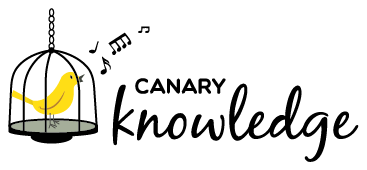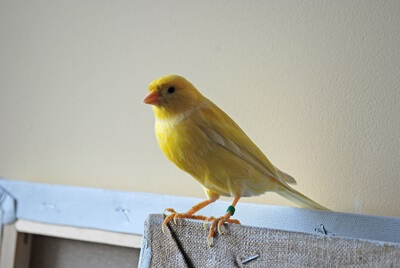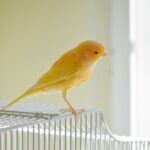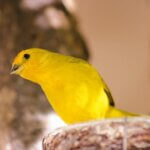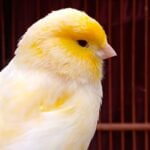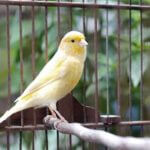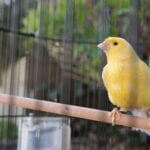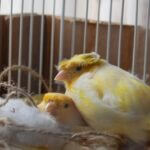Knowing when and how to cut your canary’s nails isn’t as obvious as we might think, especially if you’re still learning to care for your pet bird.
Many new owners believe that a canary’s nails will wear down naturally. Surely, if canaries can manage the length of their nails in the wild, they should be able to do the same in captivity.
Unfortunately, many pet canaries lack the necessary opportunities to wear down their nails sufficiently, which means the onus falls on the owner to keep a canary’s nails at the optimal length.
Cutting the nails isn’t just a hygiene issue; it keeps the bird safe. Failing to trim the nails can make it difficult to perch, eat, walk, hop, play, and fly, leading to accidents.
However, cutting your canary’s nails yourself isn’t recommended, at least not for the first few times. Any mistakes on your part may injure the canary or affect your bond with the bird.
Watch a vet trim the nails and practice in their company. Then, you can learn how to cut your canary’s nails in just a few steps and create a grooming routine to ensure the nails are short and clean.
The key is knowing where the nerves and veins are located and keeping the clippers away.
Should You Trim A Canary Nails?
Keep your canary’s nails at a reasonable length to avoid any problems associated with long nails.
Unfortunately, there’s no clear timeline for cutting your canary’s nails because genes, diet, and other environmental factors often determine the growth rate.
When To Give Your Canary’s Nails A Trim
If you note one (or several) of the signs below, check the canary’s nails. These include:
Changes in Normal Perching Patterns
Canaries almost always stand on perches or raised surfaces, rarely spending more than a few minutes on the floor of a cage.
So, if your canary abruptly stops standing on its perch and chooses to stay on the floor, its nails may have grown too long for the bird to perch comfortably.
Extra-long nails can also force the canary to adopt a one-legged stance while on its perch. However, your bird must be examined since an unipedal stance can also be caused by injury.
Hindered Movement
Legs are an extremely important part of a canary’s movement patterns. So, any slight complication, including nail overgrowth and disorders, will affect movement.
Canaries use their nails to walk, grab food, play with toys, and perch.
Therefore, if the nails get too long, there will be a noticeable movement reduction, whether due to injuries caused by the nails sticking to things or discomfort.
Rough Marks on Skin
According to Ibis, birds often use their nails to scratch their heads and bodies, mostly for hygienic purposes, sometimes to scratch itches, and also when bored.
Since long nails tend to be sharper than shorter ones, canaries with overly long nails inadvertently find themselves scratching too hard and causing abrasions on their skin.
So, if you suspect your canary’s nails are overgrown, examine the area around its head and plumage to check whether there are any bloody marks or scabby patches.
Scratches on Your Hands
It’s normal for your canary’s nails to scrape your hands if/when you hold them. However, overgrown nails will likely leave deep, painful scratches on the hands.
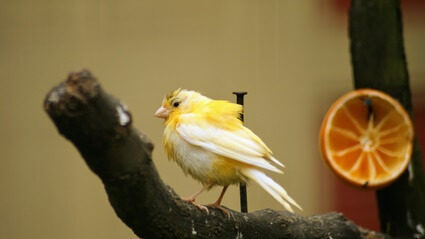
How Do Canaries Maintain Short Nails in The Wild?
Wild canaries transverse large geographical areas and perch on all types of trees. The varying widths and roughness of these trees act as a natural nail cutter.
Every time the birds perch on a branch, the friction produced therein grinds their nails down. With the birds perching on multiple trees per day, the cumulative effects of the continuous grinding ensure the nails don’t grow too long. They also trim their nails while scratching and digging surfaces for food.
Captive birds don’t forage for food and are limited to the same perches and surfaces daily, so their nails aren’t worn down as fast.
How To Cut A Canary’s Claws At Home
Your first step before cutting your canary’s nails is to ensure it’s not stressed. This way, the canary will be more settled during the session, which reduces the risk of errors.
What You Need:
These basic tools will be necessary for you to trim a canary’s nails at home:
- Styptic powder – This helps stem bleeding in case you accidentally clip the quick (the tissue connected to the bloodstream).
- Nail clippers – Ordinary nail cutters are okay, but an avian nail clipper is ideal.
- Towel – A warm and dry towel to keep the canary warm and relaxed.
Trimming Process
After collecting the above items, get the canary into a calm headspace by talking to it calmly.
Once it is settled, follow these steps:
- Cover the canary’s entire body with the towel, except for the legs. This way, the canary won’t be able to move a lot, which allows you to trim the nails more accurately.
- Take hold of one of the canary’s legs and cut the sharpest ends of the nails.
- Don’t cut any further than that, as you may accidentally clip the quick, resulting in bleeding.
Bleeding will be painful and dangerous if the canary bleeds too much.
So, you must avoid clipping the quick. Additionally, The Condor shows that the pain can traumatize your pet bird and affect your relationship long-term.
- Put the nails above a light source so you can see all the blood vessels in the nails. The good news is that most avian nail clippers come with spotlights.
- Repeat the process on all the nails and inspect them for any bleeding afterward.
- If there are signs of blood, clean up the wound immediately with the disinfectant and apply the styptic powder to prevent further bleeding.
- If no harm is done, once you’re finished trimming, return the canary to its cage, preferably with a sweet treat as a reward for cooperation.
Should I Cut My Canary’s Nails Myself?
If you can’t cut the nails, take your bird to an avian vet for all its nail trimming sessions.
The vet is more experienced in clipping nails and in a better position to handle unforeseen incidents, such as dealing with the trauma arising from a bad nail trimming experience.
Can I Dremel My Canary’s Nails?
A Dremel is a rotary tool that can grind down a bird’s nails.
Some owners prefer to use a Dremel to wear away the excess nail rather than guillotine-style clippers because they feel in more control of the process.
A significant advantage of using a Dremel over clippers is that you’re less likely to cut the quick. If you do make a slight mistake, the process cauterizes the nail.
The negative of a Dremel is that the whirring noise and strange sensations can unsettle some canaries. Also, avoid using a dremmel once it gets too hot.
